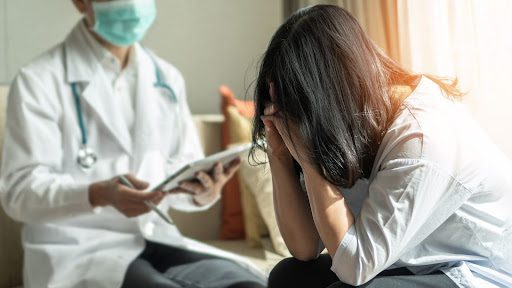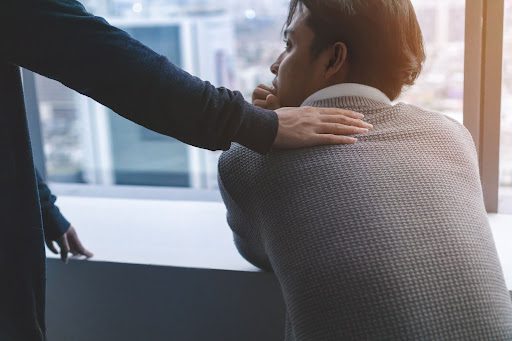Individuals who endure COVID-19 often face loneliness from isolation and may worry about the severity of their illness. These experiences can be traumatic, sometimes leading to COVID-19 Post-traumatic stress disorder (also known as PTSD).
Read on to learn what can lead to PTSD and how aspects of COVID-19 may be traumatic. Then learn about how depression and anxiety may develop after COVID-19. Finally, see why understanding COVID-19 trauma now matters for the future.
Contracting COVID-19 can induce a state of heightened distress about one’s health. This distress may persist beyond recovery and develop into COVID-related PTSD for some individuals.

PTSD can develop after direct or indirect exposure to trauma involving the threat of injury or death. Common traumatic events include assault, car accidents, or severe diseases such as cancer or COVID-19.
While most individuals cope and recover from these experiences with few lasting effects, 8% have symptoms persisting for a month or more and may be diagnosed with PTSD. Symptoms are intense, disturbing, and disruptive and may develop anywhere from a few days to several years after the trauma. They fall into the following four categories:
For some, exposure to COVID-19-related stressors may be a traumatic experience. The pandemic carries many uncertainties and health risks, an ideal situation for the development of PTSD. Isolation, health risks, and significant life changes can contribute to intense emotional reactions and distress, factors that may lead to COVID-19 PTSD.
Sources of COVID-19-Related Trauma Include:
Several researchers studied rising PTSD rates during the pandemic, measuring the presence and impact of COVID-related stress as a potentially traumatic experience. Patients recovering in hospitals had different triggers than the healthcare workers who treated them. But universal themes of fear and low support predicted PTSD development in both populations.
Predictors of COVID-19 PTSD for Hospital Patients Include:
Predictors of COVID-19 PTSD for Healthcare Workers Include:
Most COVID-19 cases are mild and can be managed without hospitalization, though recovery often requires individuals to spend many days alone. Despite the low health threat, the social isolation and restrictions involved with recovery can lead to psychological distress.
As discussed in one study involving mild cases in recovery, 22.4% of participants experienced post-COVID anxiety, and 26.2% reported post-COVID depression. While much of the concern surrounding COVID-19 rightfully goes to those with severe cases, the harm from anxiety and depressive symptoms is widespread, underestimated, and likely undertreated.

The long-term impact of COVID-19 PTSD may be more evident when the pandemic ends, but current studies have yielded valuable observations. These findings can help healthcare providers support individuals at risk for PTSD during this pandemic and future infectious outbreaks.
COVID-19 recovery involves more than physical health and safety needs. PTSD, depression, and anxiety after a COVID-19 infection are common concerns and impact overall health outcomes. Recognizing the connections between mental and physical health is vital for promoting recovery in this pandemic and future infectious disease outbreaks.